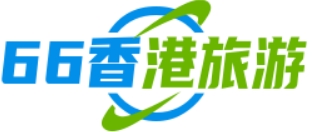本文目录
一、日本所有港口的中英文对照
1、Nicosia新泻(日本) Nicosia新泻(日本)
2、Tomakomai 392504苫小牧(日本)
3、ISHIKAWA金沢市(日本) ISHIKAWA, Japan金沢市(日本)
4、Chofu, Japan长府(日本) Chofu, Japan长府(日本)
5、KUMAMOTO熊本市(日本九州西海岸)
6、Hibikinada 392093响滩湾(日本)
7、Hisanohama 392111久之滨(日本)
8、Iyo Mishima 392147伊予三岛(日本)
9、Konoshima 392222小松岛(日本)
10、Mitsukoshima 392282三子岛(日本)
11、Naoshima Island 392333直岛(日本)
12、Niigata Higashi 392345新舄东(日本)
13、Nishinomiya 392351西宫(日本)
14、Saganoseki 392396佐贺关(日本)
15、Sakaiminato 392408境港(日本)
16、Sakaisenboku 392411界泉北(日本)
17、Shimonoseki 392438下关(日本)
18、Tagonoura 392462田子浦(日本)
19、Yokkaichi 392567四日市(日本)
二、世界旅游景点中英文对照
1、下面我为大家带来旅游英语之世界旅游景点中英文对照,欢迎大家学习!
2、 notre dame de paris, france法国巴黎圣母院
3、 effiel tower, france法国艾菲尔铁塔
4、 arch of triumph, france法国凯旋门
5、 elysee palace, france法国爱丽舍宫
6、 kolner dom, koln, germany德国科隆大教堂
7、 leaning tower of pisa, italy意大利比萨斜塔
8、 colosseum in rome, italy意大利古罗马圆形剧场
9、 parthenon, greece希腊巴台农神庙
10、 red square in moscow, russia莫斯科红场
11、 big ben in london, england英国伦敦大笨钟
12、 buckingham palace, england白金汉宫
13、 hyde park, england英国海德公园
14、 london tower bridge, england伦敦塔桥
15、 westminster abbey, england威斯敏斯特大教堂
16、 monte carlo, monaco摩洛哥蒙特卡罗
17、 niagara falls, new york state, usa美国尼亚加拉大瀑布
18、 honolulu, hawaii, usa美国夏威夷火奴鲁鲁
19、 yellowstone national park, usa美国黄石国家公园
20、 statue of liberty, new york city, usa美国纽约自由女神像
21、 times square, new york city, usa美国纽约时代广场
22、 the white house, washington dc., usa美国华盛顿白宫
23、 world trade center, new york city, usa美国纽约世界贸易中心
24、 central park, new york city, usa美国纽约中央公园
25、 yosemite national park, usa美国尤塞米提国家公园
26、 grand canyon, arizona, usa美国亚利桑那州大峡谷
27、 hollywood, california, usa美国加利佛尼亚好莱坞
28、 disneyland, california, usa加利佛尼亚迪斯尼乐园
29、 las vegas, nevada, usa美国内华达拉斯威加斯
30、 miami, florida, usa美国佛罗里达迈阿密
31、 metropolitan museum of art, new york city, usa纽约大都会艺术博物馆
32、 acapulco, mexico墨西哥阿卡普尔科
33、 forbidden city, beijing, china北京故宫
34、 angkor wat, cambodia柬埔寨吴哥窟
35、 bali, indonesia印度尼西亚巴厘岛
36、 borobudur, indonesia印度尼西亚波罗浮屠
37、 sentosa, singapore新加坡圣淘沙
38、 crocodile farm, thailand泰国北榄鳄鱼湖
39、 pattaya beach, thailand泰国芭堤雅海滩
40、 babylon, iraq伊拉克巴比伦遗迹
41、 mosque of st, sophia in istanbul(constantinople), turkey土耳其圣索非亚教堂
42、 suez canal, egypt印度苏伊士运河
43、 aswan high dam, egypt印度阿斯旺水坝
44、 nairobi national park, kenya肯尼亚内罗毕国家公园
45、 cape of good hope, south africa南非好望角
46、 sydney opera house, australia悉尼歌剧院
三、求秦陵兵马俑景点中英文对照介绍
Emperor Qin Shihuang’s Mausoleum and the Terra-cotta Warriors and Horses Museum.
Emperor Qin Shihuang(259-210B.C.) had Ying as his surname and Zheng as his given name. He name to the throne of the Qin at age 13, and took the helm of the state at age of 22. By 221 B.C., he had annexed the six rival principalities of Qi, Chu, Yan, Han, Zhao and Wei, and established the first feudal empire in China’s history.
In the year 221 B.C., when he unified the whole country, Ying Zheng styled himself emperor. He named himself Shihuang Di, the first emperor in the hope that his later generations be the second, the third even the one hundredth and thousandth emperors in proper order to carry on the hereditary system. Since then, the supreme feudal rulers of China’s dynasties had continued to call themselves Huang Di, the emperor.
After he had annexed the other six states, Emperor Qin Shihuang abolished the enfeoffment system and adopted the prefecture and county system. He standardized legal codes, written language, track, currencies, weights and measures. To protect against harassment by the Hun aristocrats. Emperor Qin Shihuang ordered the Great Wall be built. All these measures played an active role in eliminating the cause of the state of separation and division and strengthening the unification of the whole country as well as promotion the development of economy and culture. They had a great and deep influence upon China’s 2,000 year old feudal society.
Emperor Qin Shihuang ordered the books of various schools burned except those of the Qin dynasty’s history and culture, divination and medicines in an attempt to push his feudal autocracy in the ideological field. As a result, China’s ancient classics had been devastated and destroy. Moreover, he once ordered 460 scholars be buried alive. Those events were later called in history“the burning of books and the burying of Confucian scholars.”
Emperor Qin Shihuang,for his own pleasure, conscribed several hundred thousand convicts and went in for large-scale construction and had over seven hundred palaces built in the Guanzhong Plain. These palaces stretched several hundred li and he sought pleasure from one palace to the other. Often nobody knew where he ranging treasures inside the tomb, were enclosed alive.
Emperor Qin Shihuang’s Mausoleum has not yet been excavated. What looks like inside could noly be known when it is opened. However, the three pits of the terra-cotta warriot excavated outside the east gate of the outer enclosure of the necropolis can make one imagine how magnificent and luxurious the structure of Emperor Qin Shihuang’s Mausoleum was.
No.1 Pit was stumbled upon in March 1974 when villagers of Xiyang Village of Yanzhai township, Lintong County, sank a well 1.5km east of the mausoleum. In 1976, No.2 and 3 Pits were found 20m north of No.1 Pit respectively after the drilling survey. The terra-cotta warriors and horses are arrayed according to the Qin dynasty battle formation, symbolizing the troops keeping vigil beside the mausoleum. This discovery aroused much interest both at home and abroad. In 1975, a museum, housing the site of No.1 and covering an area of 16,300 square meters was built with the permission of the State Council. The museum was formally opened to public on Oct.1, the National Day, 1979.
No.1 Pit is 230 meters long from east to west, 62m wide from north to south and 5m deep, covering a total area of 14,260 square meters. It is an earth-and-wood structure in the shape of a tunnel. There are five sloping entrances on the eastern and western sides of the pit respectively. The pit is divided into eleven corridors by ten earthen partition walls, and the floors are paved with bricks. Thick rafters were placed onto the walls(but now one can only see their remains), which were covered with mats and then fine soil and earth. The battle formation of the Qin dynasty, facing east. In the east end are arrayed three lines of terra-cotta warriors, 70 pieces in each, totaling 210 pieces. They are supposed to be the van of the formation. Immediately behind them are 38 columns of infantrymen alternating with war chariots in the corridors, each being 180m long. They are probably the main body of the formation. There is one line of warriors in the left, right and west ends respectively, facing outwards. They are probably the flanks and the rear. There are altogether 27 trial trench, it is assumed that more than 6,000 clay warriors and horses could be unearthed from No.1 Pit.
No.2 Pit sis about half the size of No.1 Pit, covering about 6,000 square meters Trail diggings show this is a composite formation of infantry, cavalry and chariot soldiers, from which roughly over 1,000 clay warriors, and 500 chariots and saddled horses could be unearthed. The 2,000-year-old wooden chariots are already rotten. But their shafts, cross yokes, and wheels, etc. left clear impressions on the earth bed. The copper parts of the chariots still remain. Each chariot is pulled by four horses which are one and half meters high and two metres long. According to textual research, these clay horses were sculptures after the breed in the area of Hexi Corridor. The horses for the cavalrymen were already saddled, but with no stirups.
No.3 Pit covers an area of 520m2 with only four horses, one chariot and 68 warriors, supposed to be the command post of the battle formation. Now, No.2 and 3 Pits have been refilled, but visitors can see some clay figures and weapons displayed in the exhibition halls in the museum that had been unearthed from these two pits. The floors of both No.1 and 2 Pits were covered with a layer of silt of 15 to 20cm thick. In these pits, one can see traces of burnt beams everywhere, some relics which were mostly broken日本好景点. Analysis shows that the pits were burned down by Xiang Yu, leader of a peasant army. All of the clay warriors in the three pits held real weapons in their hands and face east, showing Emperor Qin Shihuang’s strong determination of wiping out the six states and unifying the whole country.日本景点大全
The height of the terra-cotta warriors varies from 1.78m, the shortest, to 1.97m, the tallest. They look healthy and strong and have different facial expressions. Probably they were sculpted by craftsmen according to real soldiers of the Qin dynasy. They organically combined the skills of round engraving, bas-relief and linear engraving, and utilized the six traditional folk crafts of sculpturing, such as hand-moulding, sticking, cutting, painting and so on. The clay models were then put in kilns, baked and colour-painted. As the terra-cotta figures have beeb burnt and have gone through the natural process of decay, we can’t see their original gorgeous colours. However, most of the terra-cotta figures bear the trace of the original colours, and few of them are still as bright as new. They are found to be painted by mineral dyestuffs of vermilion, bright red, pink dark green, powder green, purple, blue, orange, black and white colours.
Thousands of real weapons were unearthed from these terra-cotta army pits, including broad knives, swords, spears, dagger-axes, halberds, bows, crossbows and arrowheads. These weapons were exquisitely made. Some of theme are still very sharp, analyses show that they are made of alloys of copper and tin, containing more than ten kinds of other metals. Since their surfaces were treated with chromium, they are as bright as new, though buried underground for more than 2,000 years. This indicates that Qin dynasty’s metallurgical technology and weapon-manufacturing technique already reached quite a high level.
In December 1980, two teams of large painted bronze chariots and horses were unearthed 20 metres west of the mound of Emperor Qin Shihuang’s Mausoleum. These single shaft four-horse chariots each comprises 3,462 spare parts, and has a body with two compartments, one behind the other, and an elliptical umbrella like canopy. The four horses harnessed to the chariot are 65-67 centimeters tall. The restored bronze chariots and horses are exact imitations of true chariot, horse and driver in half life-size.
The chariots and horses are decorated with coloured drawings against white background. They have been fitted with more than 1,500 piecese of gold and silvers and decorations, looking luxurious, splendid and graceful. Probably they were meant for the use of Emperor Qin Shihuang’s soul to go on inspection. The bronze chariots and horses were made by lost wax casting, which shows a high level of technology. For instance, the tortoise-shell-like canopy is about 4mm thick, and the window is only 1mm thick on which are many small holes for ventilation. According to a preliminary study, the technology of manufacturing the bronze chariots and horses has involved casting, welding, reveting, inlaying embedding and chiseling. The excavation of the bronze chariots and horses provides extremely valuable material and data for the textual research of the metallurgical technique, the mechanism of the chariot and technological modeling of the Qin dynasty.
No.2 bronze chariot and horses now on display were found broken into 1,555 pieces when excavated. After two-and-half years’ careful and painstaking restoration by archaeologists and various specialists, they were formally exhibited in the museum on October 1, 1983. No.1 bronze chariot hand horses are on display from 1988.
今天,我们将参观秦兵马俑博物馆。秦兵马俑博物馆位于酉安市东35公里处,从喜来登酒店坐车到那里大约需要50分钟时间。自秦兵马俑博物馆于1979年10月1日开馆至今,已有为效众多国家的党政首脑都参观过这个博物馆,更有数以百万计的中外游客不远干里来参观这个人类奇迹。法国总统希拉克曾留言说过:“世界上原有七大奇迹,秦兵马俑的发现,可以说是第八大奇迹了。不看金字塔.不算真正到过埃及‘不看秦俑,不算真正到过中国。”美国前副总统蒙代尔也说;“这是真正的奇迹。全世界人民都应该到这里看一看。”从这些高度凝练的话语中,我们不难看出秦俑的历史价值及艺术价值。下面,我想把秦始皇这位成就一代伟业的历史巨人介绍给诸位,以便使大家能对秦始皇兵马俑和与之相关的历史有一个较详尽的了解。
谈秦兵马俑,必须先介绍一下面赢政。公元前259年,一代伟人赢政诞生了。13岁时,其父死后.他继承了王位。按照泰国惯例.国王在22岁举行过“加冕礼”以后,才可以亲自执政。当时.秦国的大权仍攀握在太后、相国吕不韦、宦官谬瘪(160 6i)手中。特别是螺贞.手握大权,炙手可热,他见宛改逐渐长大,便阴谋叛乱.夺取政权。公元前238年,22岁的赢政去故都雍城纳新年宫举行加冕礼。谬酉在从霸年宫回咸阳的路上埋下伏兵,准备将赢政杀死。当赢政察觉此事后,凭优势兵力订败锣盔,将其生擒并车裂致死。赢政亲致以后.以吕不韦放纵嫁亮为名,放逐日不韦。吕不韦后来饮毒洒自毙。这样,赢政顺利地消灭了政权内部的两大敌对势力,巩固了自身的地位。为了进一步巩固君主权力,赢政选用了一批精明强干酌文臣武将,如掌握军事的尉缭,攀管国欧的李斯。接着,赢政制定了远交近攻、离间外敌、各个击破的战赂方针,开始统一中国,结束了春秋战国以来长达500多年各诸侯国割据称雄的混乱局面。从公元前230年到公元前221年,在不到io年的时间里,泰国灭亡了6国,终于完成了统一大业,建立了第一个中央集权的封建国家,为封建社会经济、政治、思想文化的迅速发展奠定了基础。这又一次显示了赢政的维才大赂。
赢政称自己为始皇帝.因为他希望他的子孙后代能把他所创立的政权干代万代传下去。为此.他整顿了官僚制度。第一.从中央到地方的官吏全由他亲自任免;第二,废除分封制,推行郡县制。第三.秦始皇还统一了法律、文字、货币、度量衡等。这些措施极大地推动了封建社会政治、经济、文化的发展。另外,他还征用劳役,广修驰道,使各地交通便利,以利经济文化的交流。他将战国时期秦、赵、燕三国修筑的长城连在一起后.又加以扩展,形成了西起甘肃临挑,东到辽东因石的万里长城,有效地遏制tjb方游牧部族对案朝的骚扰。
中国皇帝大都为自己营造巨大而豪华的陵墓。在这一点上,案始皇也不例外。在他13岁刚即位时,就下令为其修建陵墓。这座原高120米.周长2000多米的巨大陵丘、虽经风雨侵蚀和人为破坏,现在仍有76米之高,g长400多米之大.案始皇把都城威阳微缩于自己的陵园内,其布局几乎完全相同。陵园内城西北部为献殿建筑区,陵东北部洼地是用以祭记的养鱼池,陵园外城西北角是石料加工场.陵西外城之外是一个大坟场。据史书记载,秦朝全国总人口约2000万,壮丁不过700万,而筑陵时,壮丁最多达70万,可见工程之浩大。
案始皇的陵寝如同一座庞大的地下宫殿,真可谓是一座地下“福地天堂”。墓室屋顶有天文星宿图,t是由各种均馅生辉的珠宝构成的,下边有五岳、九州以及由机械驱动水银构成的江河湖海。另外,还没有让百官朝拜案始皇的大厅。为防止盗威,每座墓门上都安有自动发射的弓箭。整个陵墓可以说是一个金碧辉煌,固若金汤的地下王官。案始皇把生前所享受的一切也搬到了地下.供他在另一个世界继续享用。他连那些为他伴驾b不曾生育的宫女,以及辛勤修建地下陵寝的工匠们都不放过.下令在他人殆时,将这些人统统活埋,为的是不让宫女外嫁他人,不让陵寝内的秘密泄露。
现在,我们面对的是秦俑馆一号坑,坑里就是号称“世界第八大奇迹”的秦兵马俑。面对威武整肃的庞大军阵,你们的脑子里一定会闪现如下问题:这些秦佣是怎么发现的?为什么他们的相貌各异?为什么要制作这些俑?1、2、3号坑里共有多少俑等等。好,现在我就一一回答大家的这些问题。
这些俑是1974年3月西杨村农民们在打井的过程中发现的。据村里的老人讲.早在明朝,就有人在这里发现了秦俑。有一天,住在村里的难民在村外空地上订了一口井,井水清澈,甚是喜人,可是第二天他们却发现井底的水不见了。他们中胆大的腰系绳子,下去查看。不一会儿.井里传来惊叫声,上面的人暖紧把井里的人拉上来。这人说,他看见一个站立着的、身穿盔甲的怪物.伸手要抓他。听者都非常害怕,想赶快用土回填那口井。但他们最终决定报告文物部门。
经过考古专家们的勘探、鉴定.秦捅馆内的t、2、3号坑被确认为案始皇棱的陪葬坑。从1974年到1979年,经过5年的艰苦努力,在1号坑遗址上矗立起一座气势宏伟、结构科学的建筑物。这就是1979年10月对国内外游客开放的素兵马俑1号坑。3号坑在1989年9月27日——世界旅游日对外开放。现在,在2号坑的遗址上,一座大理石建筑又落成了,它于1994年11月开始接待游客。从此,3个俑坑全都被保护在建筑物里,不再经受风吹日晒雨淋。在供游人观看、怀古的同时,考古工作者们还在这里继续发掘整理兵马俑。
经测量,1号坑东西长330米,南北宽62米,面积4260平方米。侗坑的最东端是3gf面向东的武士,每排7个,共210个捅。他们是部队的前锋。前锋部队的后面为部队的主体,他们被诽成38路纵队,站在11个坑道里。每个坑道都是青砖铺地,坑道内例的两边,每隔2米就有1根立柱。这些立柱支撑着木质屋顶,屋顶上是织成“人”字形的纹席.席上是土。整个坑道距地表5米深。另外,在坑道的南、北、西三面备有一列面向外的武士.他们分别是部队的右翼、左翼和后卫。现在,1号坑已出土1000多件陶桶。根据推剿.全部发掘完后.仅1号坑就将出土6000多个兵马桶。日本好的景点
这里是1994年11月开放的2号坑。它是由车兵、骑兵和步兵构成的曲尺形方阵。估计可出土兵侗1000多件,车马和鞍马500多匹。2号坑占地6000平方米。它东面突出部分为一个小方阵,6334个弯兵桶组成。2号坑南部为64乘战车组成纳方阵,每排有8辆战车,共8诽;中部为19辆战车和随车徒手兵涌;北部是战车和骑兵。北部是由战车6乘、鞍马和骑兵各124件组成的骑兵阵。
现在,我们来到了3号坑,它位于2号坑西边25米处。这个坑是1976年发现的。它里凹字形,占地520平方米。在3号坑里,考古专家们只发现1辆战车和64件武士捅。它们两两相对站立,手捏仪卫兵器曼(sh6)。大多数考古专家认为,从这个坑里武士的排列方式和手中所握的兵器,以及该坑与秦陵的位置来判断,3号坑是整个军阵的指挥部。据估计,等1、2、3导坑全部开损后,将出土8000多件陶佰。这些佰相貌各异:有的沉稳刚毅,有的英勇果敢,有的慈善含笑。可谓杨杨如生,神情各异。因为,它们全是根据秦始皇彻林军中的将士们制作的,因此,在8000“地下御林军”中,弥绝对找不到两个相貌、形体相同的捅。他们一个个气废不凡,最重的有300多公斤,员轻的也有100多公斤,身高从1.7米到1.9米不等。如果大家仔细观瞧,不难分辨出兵桶中履些是陕酉人,娜些是四川人,哪些是甘肃东部人。这从他们的胡须梳理方式和长相即可看出。我们很多人在电影中都见过日本人的“仁丹须”.其实,案便中就有蓄仁丹胡酌,可见,这并不是日本人的发明,早在2000多年前,中国就有人留这种胡须了。
那些穿窄袖战袍外套,披挂齐腰短甲,脚登紧带兽皮鞋,头戴防风妇的,显然是机警的骑兵。那个左脚着地,s膝弓起,右腿脆地,有脚底向后翘起的为跪射佰。
他双目乎视前方,神情专注。这个涌鞋底的针角,两头细致续密.中间疏稀.完全符合历支真实。在五六十年代的陕西农村,很多农民仍喜欢穿这种挂、只是鞋尖不向上朗翘而已。几乎每个捅的衣襟上都刻有工匠的姓名,这符合“物勒工名,以考其诚”的制度。我们今天实行的产品质量监督管理制度,秦人2000年前就已采用了。
涌坑中约马屑典型的河西走廊马。它身高l 5米,长2米,分为头、颈、躯干和腿四部分。腿为实心,躯干中空,分段烧制,再组合在一起。马的两耳宜立,体型健壮优美。由此可看出,秦人不愧为养马世族。大家也许要问秦始皇为什么要为他制作数量如此之多的兵马桶呢?它们是怎样烧制成的呢?原来,秦始皇曾想用4000童男童女为其殉葬。他降旨令李斯承办此事。李斯心中惧怕.未敢马上执行此令。因为,6造秦腔.建筑长城已惹得民怨沸腾,再让如此众多的童男室女殉葬,岂不是火上浇油吗?他将来恐怕也死无葬身之地。于是,李斯向美始皇建议;制作与其人真马一样大小的兵马桶,守护其亡灵,以壮声威。闻听此官,秦始皇大喜,他重新降旨,让李斯征集全国的能工巧匠.以他的8060御林军为原型.q作陶佰。这些桶必须手握实战兵器按实战队形排列,秦始皇再三嘱咐李斯,此事万不能叫御林军知道。因为秦朝民间流传一个说法,如果一个人被别人复制成柄.其魂也就被勾走了.这可是大忌。案始皇当然不愿惹怒他喜爱的曰林军了。工匠们纷纷去找询林军中自己的亲戚、朋友、老乡、熟人,仔细观察其容貌特征,并默记于心。回去后,工匠们用模压、塑捏、刻画、贴条等手法制成陶佰,然后放在窑里烧。可是,放进去的陶佰全都被烧炸了,工匠们百思不解其中原因。后来,一个工匠为发泄对监工的仇恨,把制好的监工陶涌的头去掉,将其四肢“削”去,用手“掏净”其内脏,放到窑里分段烧。这一次竟没炸窑。他把头和四肢装在佰身上,一个活生生的监工出现了。,由此,工匠们开始了大规模的制捅工程。8000御林军捅就这样被造了出来。
当然,案兵马桶是借庞大的军队,来显示秦始皇灭六国、建立统一帝目的雄心壮志酌。这些兵涌手执短兵器、长兵器和远射兵器,如剑、铱、吴钩、矛t戈、曼、裁、铰、弓、弯等。这些兵器主要是用铜和锡做成的,经分析里边还含有其它13种稀有金属。为防止兵器生锈,案人在兵器表面徐有一层铬盐氧化物,这种镀铬技术在本世纪20年代才由檀国人发明出来,而我国在2000多年前就开始在兵器上镀铬,这实在令人叹跟。现已出土的弯机,分小、中、大三种类型。前两种舀机,案兵用手拉弓弦就可以,而大型弯机,荣兵必须借助杠杆.才能将弓弦拉到扳机上。大型露机的射程为600多米,可比得上一支老式步枪了。
这是1980年在案陵西边18米处发现的两乘青铜车马。一号车马为驷马高车,二号车马为骡马安车。韧发现时,这两乘车马破损严重,尤其是供秦始皇灵魂乘坐的安车,已破碎成1500多片.经考古工作者修复后,现在,它们看上去完好如韧。两乘车的车、马、人都是仿照真车、真马、真人,按比例缩小二分之一制成的,仅安车上金银饰物就有1720件,重达7公斤。钢车马给人的不仅是艺术享受,更为重要的是.它们具有重要的历史价值和科学价值。铜车马是我们了解、研究秦朝车制、冶金铸造技术、工艺水平等不可多得的实物资科。虽然.英雄一世,创立无数伟绩的秦始皇——赢政早已去世2000多年了,但是,他的伟绩,以及现存的兵马桶留给人们的思考是什么呢?或者说,我们能从上述事物中吸取些什么呢?我想,敢创历史先河、为国家统一不惧死亡的铝赂和勇气是我们应该吸取和仿效的。一代伟人赢政横扫六国、统一中国的非凡气度和魄力仍不失为我们今天克服前进路上的障碍的巨大动力。一个民族.一个国家想要富强,没有这种气魄是不行的!
四、日本各个城市的中英文对照
kurume是久留米,日本九州北部的工业城市。位福冈县西南部,筑后川下游筑紫平原的中心。人口22万(1985)。面积123.9平方公里。1889年设市。以人造橡胶为中心的化学工业发达,产量居日本首位,其制品三分之一以上供出口。附近有蔬菜和果树种植。有久留米大学等教育、文化设施。有古城迹、古墓、水天宫等古迹,为游览胜地。和我国安徽省合肥市是友好城市。日本红叶景点
gifu是岐阜,岐阜位于中部地区西部,是一个内陆县。县北部有着海拔3000多米的雄伟的飞騨山脉,南部有着清澈的美浓河川,因此南北风景成为鲜明对比的岐阜县自古以来就被称为“飞山浓水”,作为南北重要的交通要道发展繁荣起来。在战国时代,有着“控制了美浓就等于控制了天下”的说法,这块地方成为许多战争的大舞台,著名的有关原之战等。日本动漫景点
五、日本又哪些景点 (中英文互译的)
大涌谷(Owakudani)是箱根最著名的旅游景点。在绿树环抱的箱根中惟独此处山岩裸露,岩缝间喷出的地热蒸气雾气腾腾,令人感到地球的生命运动,尉为壮观。由此可眺望富士山和箱根群山的美丽景色。
东京迪斯尼有两大主题乐园,七座舒适的大饭店,以及其它购物娱乐设施所组成的欢乐世界。是大人找回童真,小孩寻找快乐的地方。
Tower)位于东京市内,建成于1958年,塔高333米,这座日本最高的独立铁塔上部装有东京都7个电视台、21个电视中转台和广播台等的无线电发射天线。在250米高的地方,也设有一个特别展望台。展望台四边都是落地的大玻璃窗,窗向外倾斜。
Mountain)位于本州岛中南部,海拔3776米,是日本最高峰,日本人奉之为“圣山”,是日本民族的象征,距东京约80公里,跨静冈、山梨两县,面积为90.76平方公里。整个山体呈圆锥状,山顶终年积雪。
Temple)位于奈良市的唐招提寺是由中国唐代高僧鉴真和尚亲手兴建的,是日本佛教律宗的总寺院,这座具有中国盛唐建筑风格的建筑物被确定为日本国宝。











